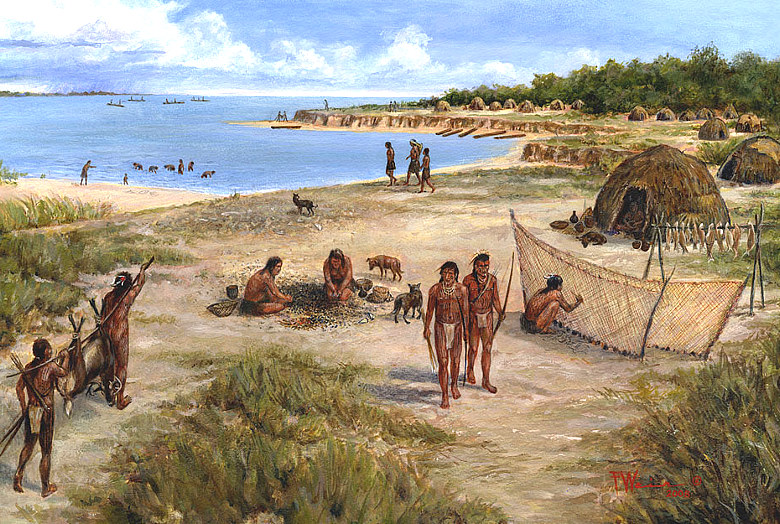Patterns of the Past

|
Run your cursor over the scene above to view some of the archeological finds from archeological sites on the central Texas coast.The year is circa A.D. 1400. Karankawa families are living in their winter fishing camp on a bluff overlooking San Antonio Bay. Dozens of pole-frame huts covered with hides or mats provide shelter and also a place to store their food. Nearby, the Guadalupe River runs through delta marshlands to empty into the bay, and woodlands stretch out in the distance, a blend of environments supporting a rich variety of resources. Coastal peoples, such as the Karankawa, adapted to the varied environments of the shores, marshlands, and prairies by moving frequently from camp to camp according to the season and the availability of resources. In the fall and winter, they lived along the bays and lagoons to harvest fish. In the spring and summer, they moved inland to set up smaller camps along rivers and creeks. No doubt they returned to many of the same camps, year after year, leaving behind piles of trash, burned-out campfires, and other traces of their stay. It is this evidence that archeologists use to reconstruct what life was like in the past. Much of the scene above—the setting and resources—is based on the Guadalupe Bay site in Calhoun County. Artist Frank Weir, who worked as an archeologist for the Texas Department of Transportation for some 30 years, draws from his knowledge of the Texas coast, its prehistoric peoples, and their remarkable material culture to create this painting. Dr. Weir also painted a coastal plains burial scene based on the Loma Sandia cemetery site near Three Rivers, Texas, for which he served as Principal Investigator. To learn more about life in prehistoric times, take a look at the Guadalupe Bay site and other sites on the Ancient Places layer of the Coastal Prairies and Marshes map. |